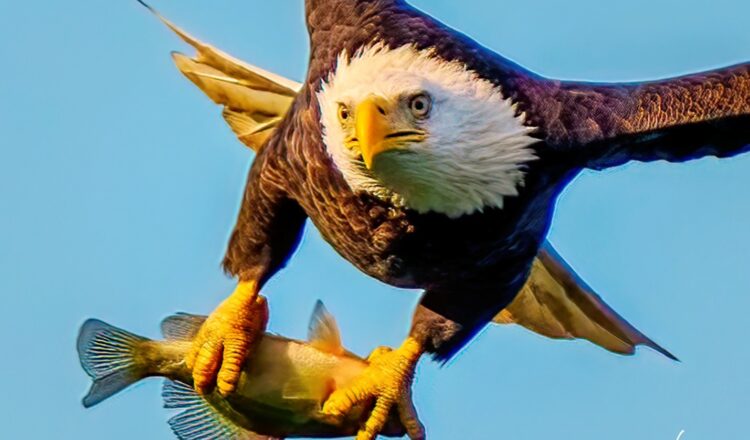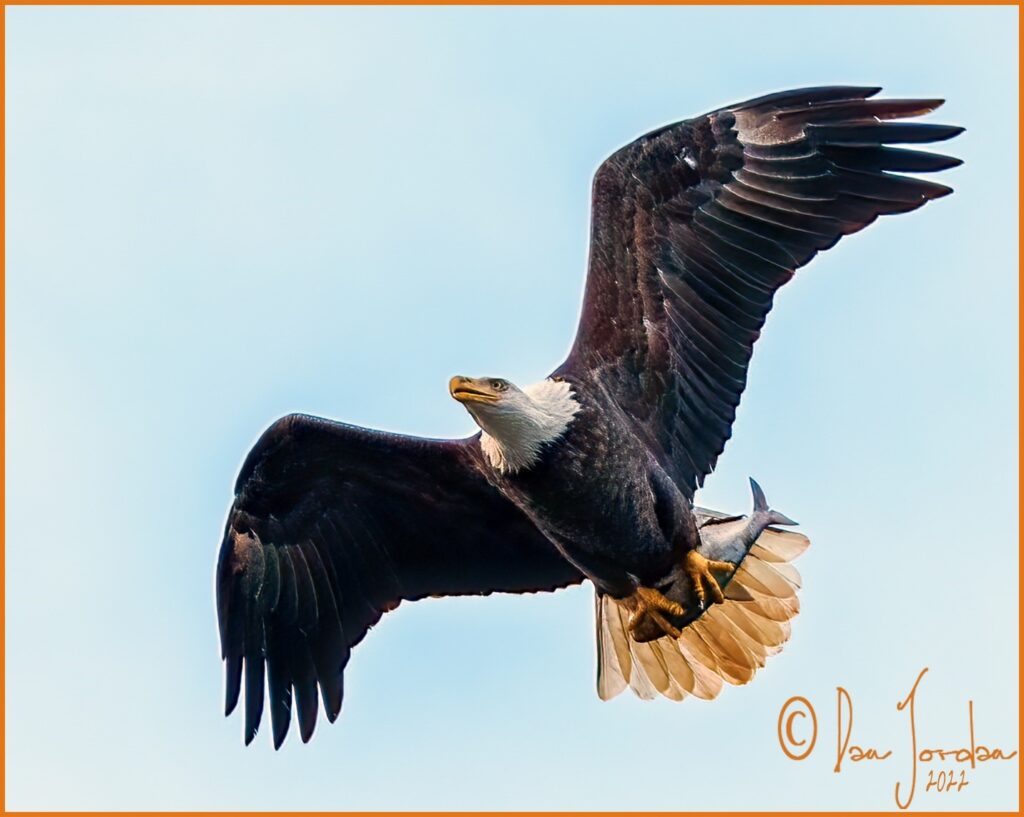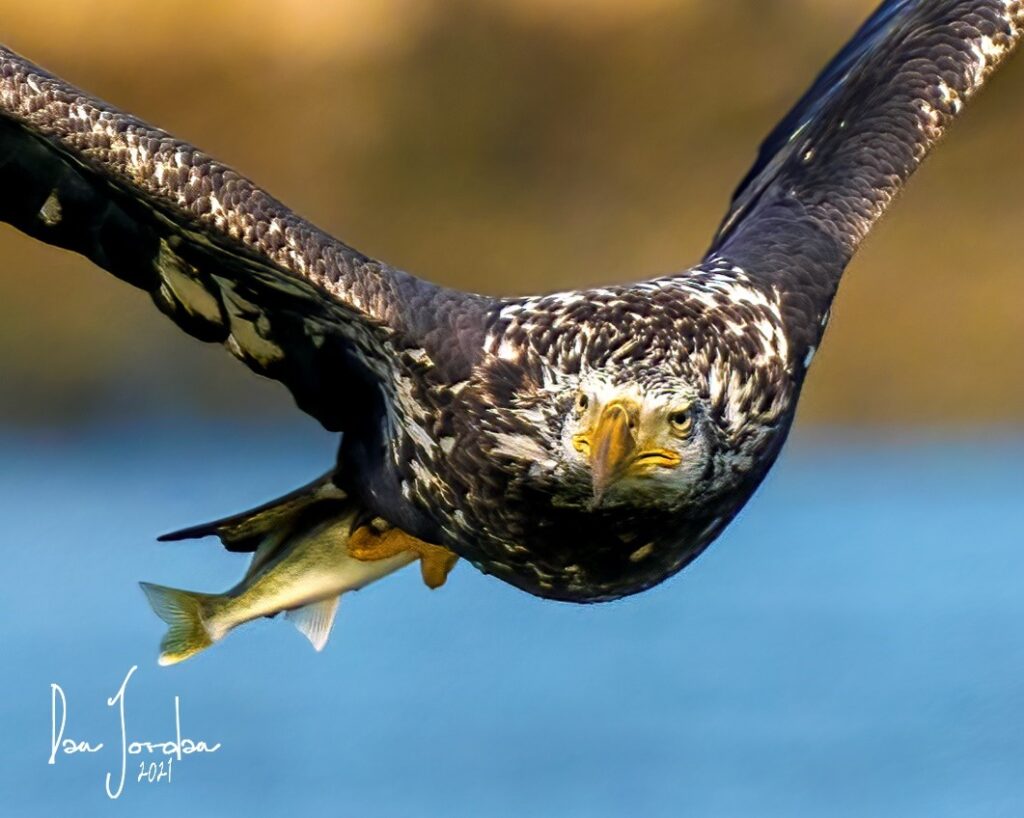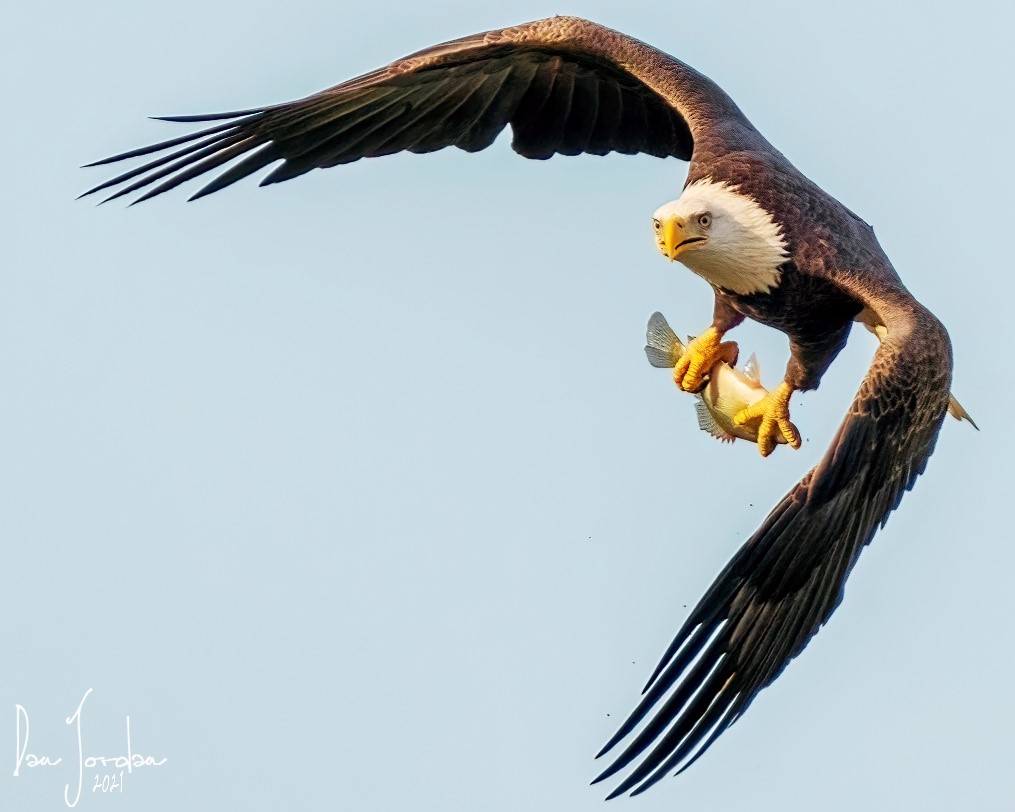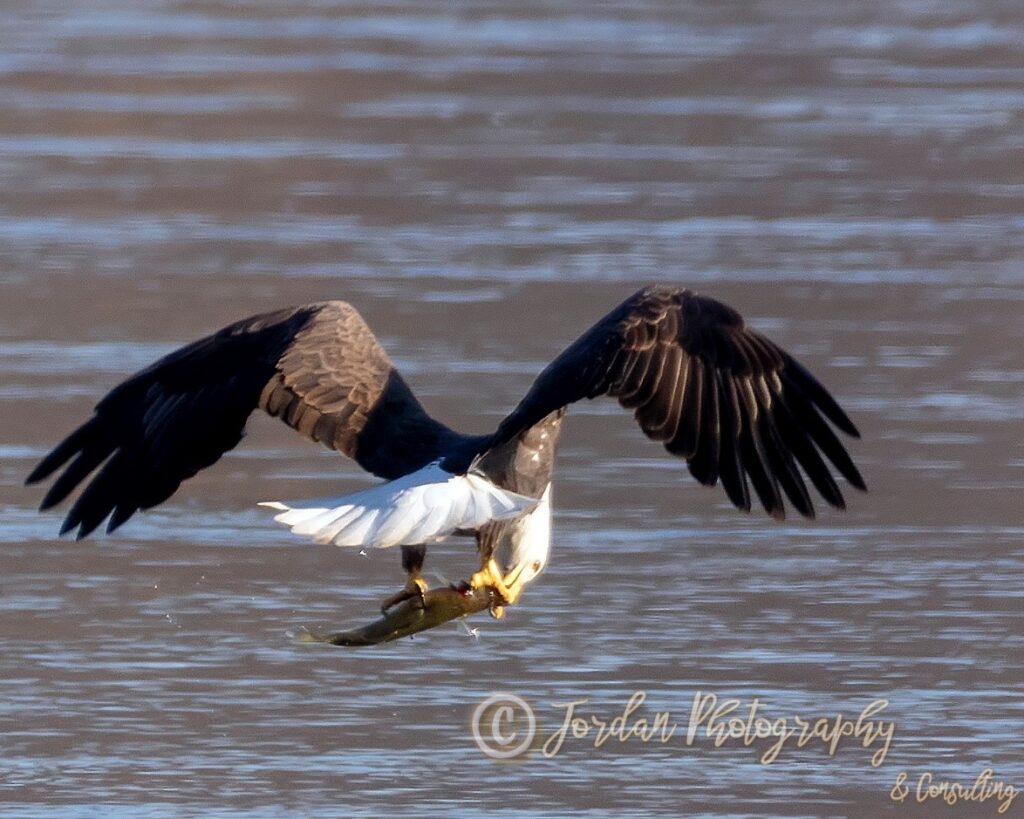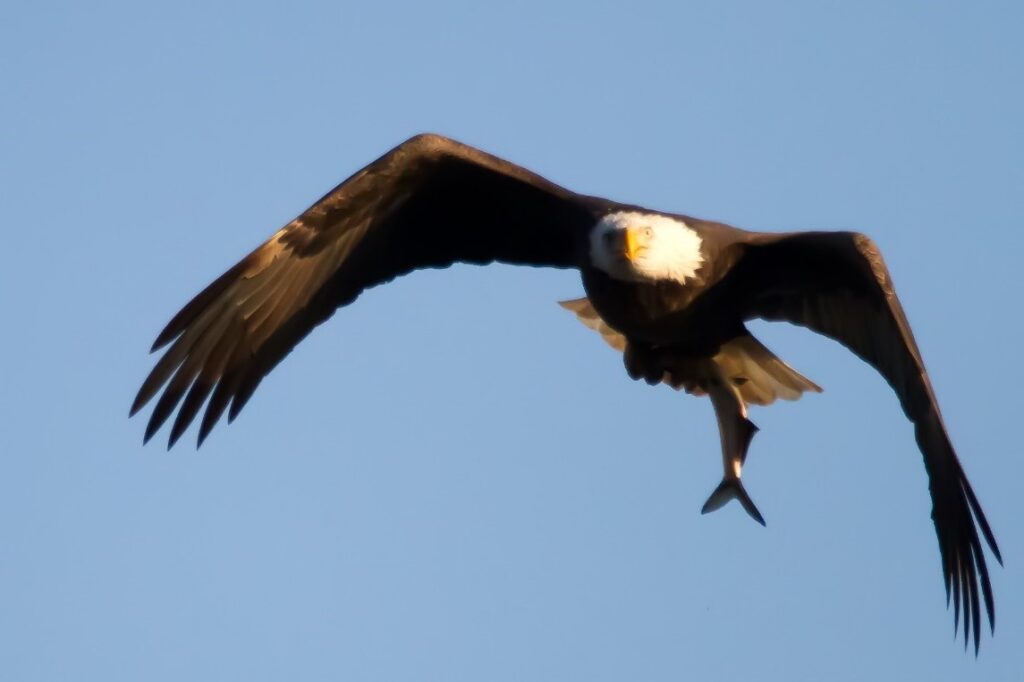By Dan Jordan, Jordan Photography and Consulting
This week’s edition of Dan Jordan’s Wild World deals with the diet of bald eagles. The bald eagle is the only eagle which is native only to North America. It is a sea eagle (Haliaeetus species) as are the African sea eagle and the Eurasian white-tailed eagle. Once endangered, our national bird is currently thriving in many areas of the United States.
Its existence continues to be pressured, however, by loss of habitat and other forms of human intervention. Urban sprawl, cutting of forests, and development of river and lakefronts replace eagle habitats with human settlements.
Development of water features is especially problematic, since, as you may have inferred from the “sea eagle” classification, bald eagles are water birds. Their survival is hinged upon access to fishing; good, consistent fishing.
Bald eagles are carnivores and are considered to be opportunistic feeders. More on that in a moment. The reference materials I read differ on the percentages of various foods that eagles consume. I believe that the location and weather conditions influence their diets considerably, so a generalization is difficult to make. What is clear is that fish make up the largest portion of an eagle’s diet. Some estimate 50%, while others estimate as high as 80%. Fish are relatively easy prey to catch given the eagle’s outstanding skill set, and provide much needed highly saturated fat that their diet demands.
Suppose you are an eagle nesting on the Mississippi River or on Lake Erie, where fishing is good year-round. Your fish intake is going to be very high. Now suppose your nest is on the tiny little Oil Creek, in Rawson, NY. Even though Cuba and Rushford Lakes are nearby, your diet may be more diverse, perhaps eating a few more small mammals and water birds.
So, let’s say that fish makes up around 60% of the typical bald eagle diet. What makes up the rest? Waterfowl is the next largest component followed by small mammals. Rounding out the typical diet would be lizards, snakes, frogs, etc.
But what about cold weather, you ask? Good question. When I mentioned opportunistic above, it suggested that eagles would eat whatever is available, and that is true. In the diet contents listed above, no mention was made of carrion. Yet, eagles will eat roadkill, especially dead deer in the wintertime when their normal food sources are not as plentiful.
Here’s a photo of one of the Rawson eagles on/near a deer carcass just down the road from their nesting site.
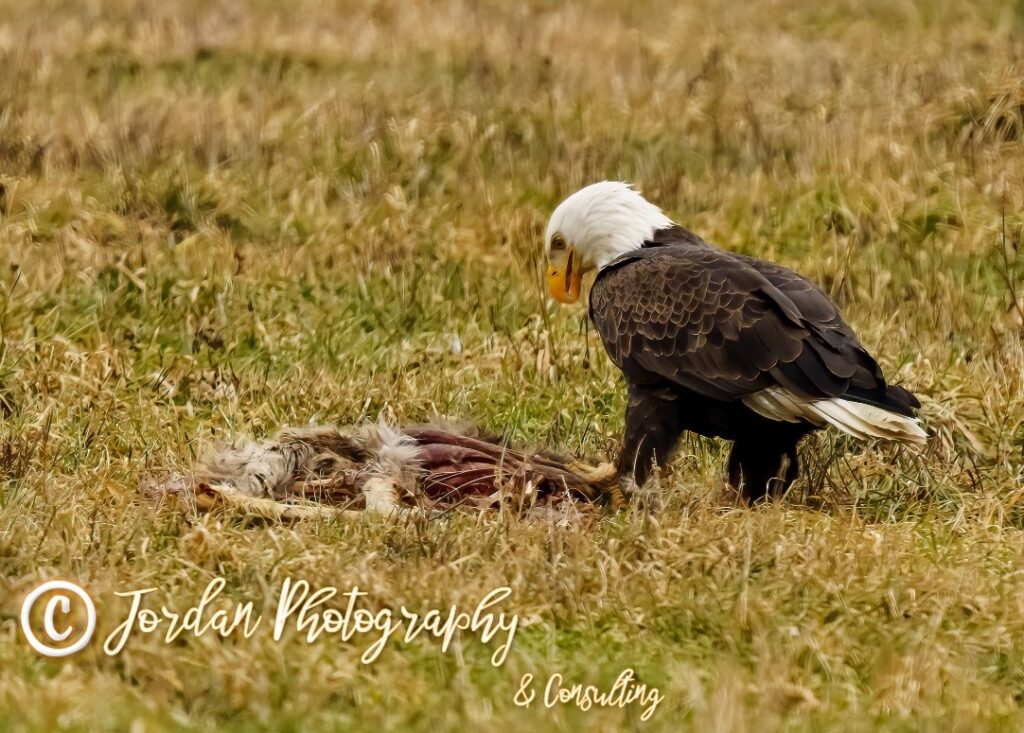
I’m pretty sure that an eagle’s first choice would not be dining on a deer carcass, however, one does what one needs to do to survive. I might even consider eating vegetables if my survival was at risk. I admit that I’d have to give it some serious thought first, though. But enough about me.
According to the American Eagle Foundation, an eagle needs to consume between 0.6 and 1.0 pounds of food per day to survive. (Eagles only weigh between 8 and 12 pounds) That’s a lot of fishing! Caloric intake is especially critical in the winter months, the calorie burn to stay warm is higher than the calorie burn on a sunny summer day. Unfortunately, the winter brings scarcity of food sources, including fish. This is why you are more likely to see eagles eating carrion in the winter months.
One last point, before I show more photos; some eagles leave the northern climates for “greener pastures” so to speak, in the winter months. Scientists do not call this migration; they call it seasonal movements. Migrations are annual events which follow given patterns. What eagles do, when they do it, is not regular and they don’t go to the same place year after year. When their primary food source freezes over, they go as far south as they need to, in order to find adequate food. This can be southern Pennsylvania, Virginia, Maryland, New Jersey, or a whole host of other locations.
The Genesee River has many nests along its shores, right close to us. My observations are that these eagles do not tend to leave in the winter, as the river tends not to freeze over. The eagles from Ischua, Rawson, Beaver Lake, among others seem to disappear during the coldest months. Yes, their waters all freeze over.
As I’ve said before and will continue to say. If you want to see eagles in WNY/NWPA, keep your eyes open around water features. Where else would you expect to see a sea eagle? Following are some eagle photos I have taken over the years. I have selected food related photos for this article, as you will see.
The first shows one of the Limestone eagles carrying a waterfowl back to its nest, I’ve been told that it is (or was) a merganser. Not the best photo but it was taken from over 100 yards of the eagle in full flight. It’s the only photo I have so far of an eagle carrying a waterfowl.
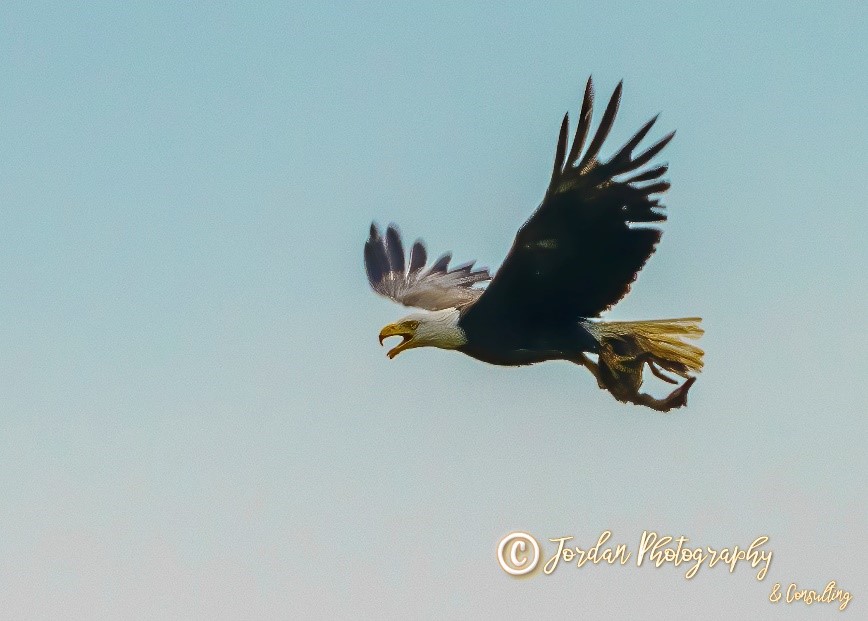
The last photo demands a bit of explanation, since it doesn’t readily seem to be food related. I started photographing bald eagles in 2016, when I saw my first eagle in the wild. It was in my front lawn, of all places. I was hooked. I started looking for eagles and began seeing them. I upgraded my camera gear and began photographing them in earnest.
A year later, I was on a trip to Ithaca, when I spotted an adult eagle in a tree along the highway in Hinsdale, NY. I was excited (putting it mildly) as the eagle was very close. I stopped and got some great photos, in fact, the first photos I ever had published came from this encounter.
I was looking at the back of my digital camera fidgeting with settings or admiring my photos or something. When I looked up, this is what I saw.
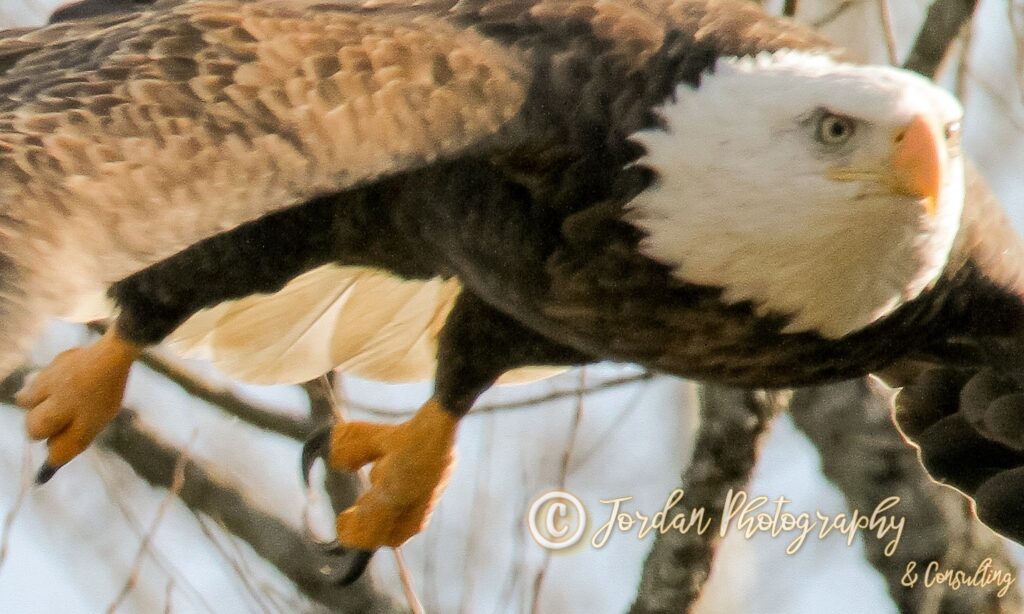
This was my first (certainly not my last) close encounter with a bald eagle. To say I was scared would be the grossest of understatements. I thought the eagle was coming for me. How I ever managed to get this shot is amazing. I did. As I fell to the ground, trying to avoid those talons, I pushed the shutter. The eagle was so close to me that I could feel the wind from its wings.
Now, to tie this together with an article about food. Dan was not on the menu this day. There was a dead squirrel on the edge of the road behind me that the eagle was after. It scooped the carrion up and flew off, leaving me to scrape the snow off myself and get into the car.
Opportunistic, for both the eagle and the photographer!
I hope that you’ve enjoyed this edition of Dan Jordan’s Wild World as much as I have in writing it. I wish I could share more of my eagle photos with you in these editions, but there are simply too many. I have about as many stories as I have photos too. Maybe in a future edition, I will discuss and show my close encounters with you.
By the way, as a reminder, during nesting season (~March-July), stay away from eagle nests. Hefty fines can result from law enforcement for encroaching or disrupting eagle behavior during nesting season! The NYSDEC website will clarify the regulations for you.
Keep your eyes open, especially near water features, you never know what you might see.


